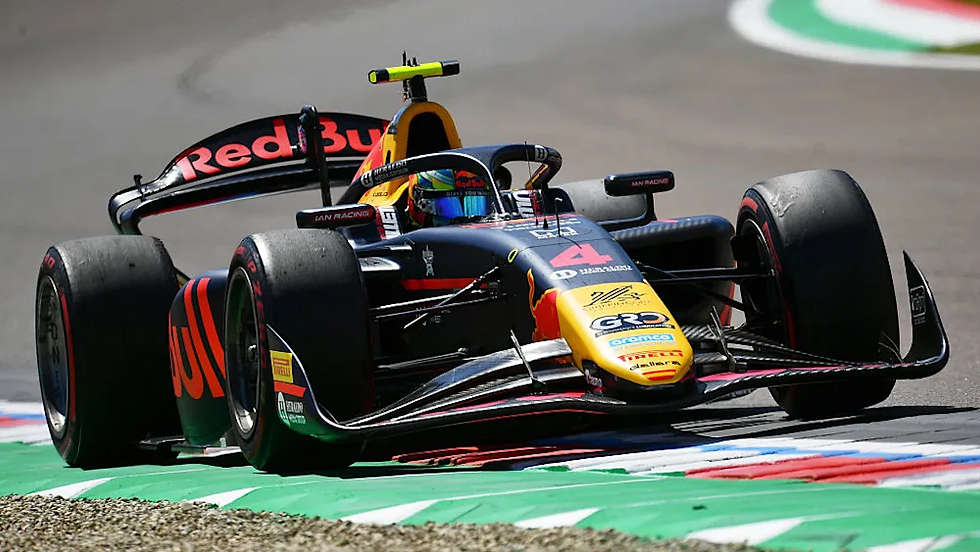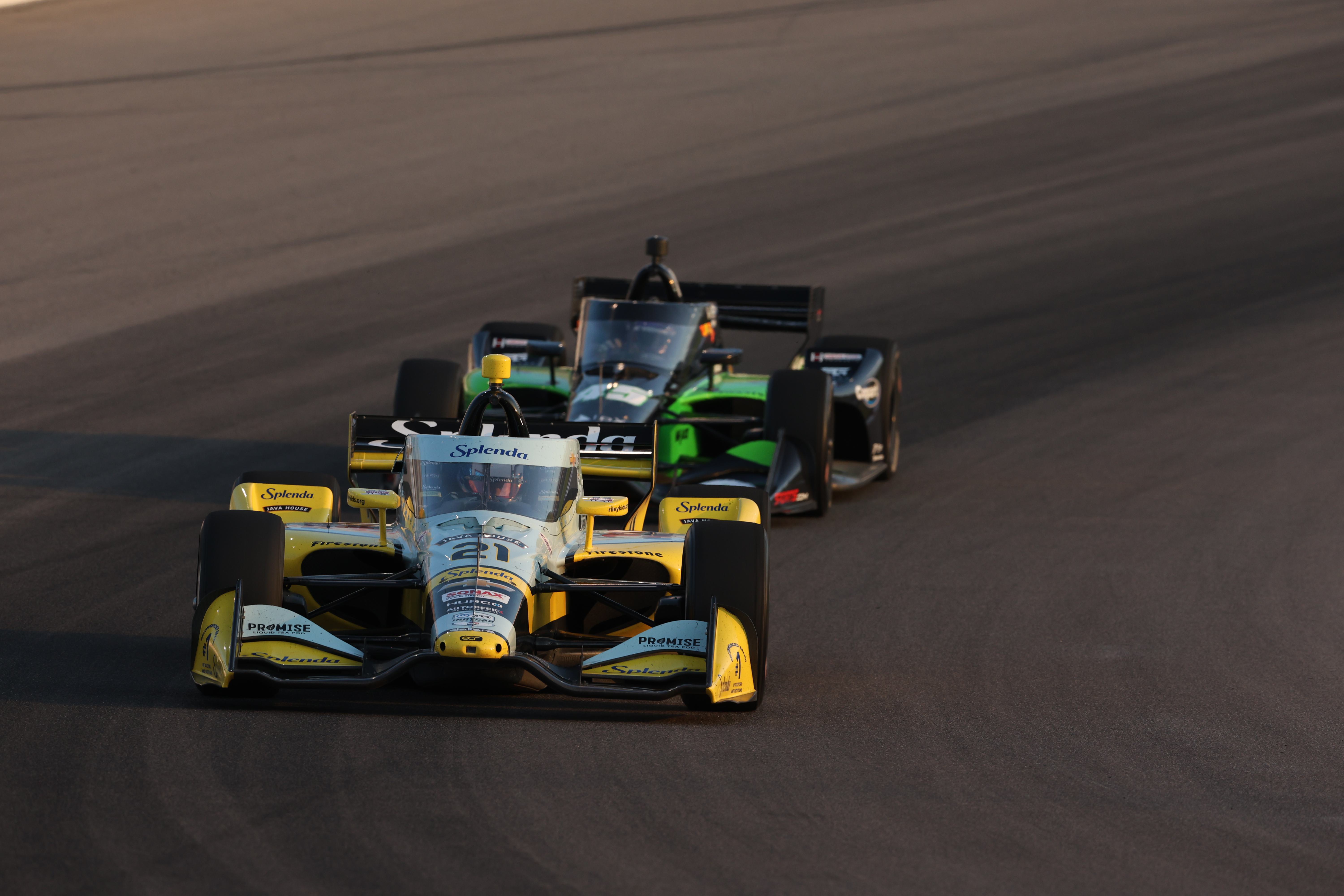EXPLAINER: All you need to know for Group Qualifying in F2 and F3’s Monaco weekend
- Vyas Ponnuri

- May 22
- 6 min read
Updated: Jul 8
Written by Vyas Ponnuri
As Formula 2 and Formula 3 head into the streets of Monte Carlo for their latest outing, the grid for both races will be decided through a unique qualifying session, with drivers split into groups taking to the track for 15-minute sessions.

In a qualifying trait characteristic of F1’s support series run in Monaco, drivers will go out in groups of 11 (or 15, for Formula 3 qualifying), with the regular 30-minute session split into two shorter 16-minute bursts. An eight-minute break splits both groups of qualifying sessions.
As such, the overall length of qualifying extends to 40 minutes for both F2 and F3 around the streets of Monaco, taking into account the break in between qualifying for both series.
Why is Monaco qualifying different from other rounds?

In other weekends, every driver takes to the grid for a 30-minute qualifying session. Each driver can go out at any point in the half-hour session to set a lap, determining their grid spot for the race.
However, in Monaco, the drivers will take to the streets in two groups, Group A and Group B, with drivers in their respective groups getting only 16 minutes to set their lap times and determine their starting positions for the sprint race on Saturday, and the feature race on Sunday.
It adds even more intrigue and spice to an already competitive session, with the pole-sitter having taken victory in the Principality in four of the last five F2 outings. The only exception here is the most recent running of the event in 2024, when a late strategy gamble by Zak O’Sullivan granted him and ART Grand Prix victory from 15th on the grid.
Similarly, F3 has bucked the trend in Monaco, with 2024 runner-up Gabriele Minì having converted pole position to victory around the streets in both of F3’s visits to the Principality.
With only 16 minutes of qualifying for drivers, as opposed to the usual 30 minutes, qualifying action will only be more frantic around a circuit where track position is everything.
What are these qualifying groups? How are they determined?

These groups, named Group A and Group B, are decided based on the car numbers. Odd-numbered cars are seeded in Group B, while even-numbered cars are seeded in Group A.
Now, who goes out first to qualify? This is decided by a special draw during the drivers’ briefing ahead of the weekend. For this year’s F2 and F3 outings in Monaco, it’ll be Group A heading out first to qualify, for both championships.
Why don’t they use the regular qualifying format in Monaco?
The regular qualifying format sees all 22 cars (or 30, in the case of F3) take to the track at once, to set their laps.
Now, as we all know, the narrow confines of Monaco’s streets make it a challenge for drivers to navigate and maintain their flying laps. With qualifying ever important around the streets of Monaco, irrespective of the championship, a driver impeded on his flying lap can cost them dearly, as track position is quintessential around the 2.074 mi (3.337 km) long circuit.
Due to the number of entries being greater in F2 (22 cars) and F3 (30 cars) than in Formula One, and only a 30-minute session for either series, it was decided to run qualifying in two equally-split groups around Monaco, giving drivers more room on track and less traffic for the drivers to handle.
So then, what are the qualifying groups decided for this weekend?
The qualifying groups in Monaco for this weekend are as follows:
Formula 2:
Group A:
Roman Staněk (Invicta Racing)
Arvid Lindblad (Campos Racing)
Richard Verschoor (MP Motorsport)
Dino Beganovic (Hitech TGR)
Gabriele Minì (PREMA Racing)
Kush Maini (DAMS)
Victor Martins (ART Grand Prix)
Amaury Cordeel (Rodin Motorsport)
Joshua Dürksen (AIX Racing)
Sami Meguetounif (Trident)
John Bennett (Van Amersfoort Racing)
Group B:
Leonardo Fornaroli (Invicta Racing)
Pepe Martí (Campos Racing)
Ollie Goethe (MP Motorsport)
Luke Browning (Hitech TGR)
Sebastián Montoya (PREMA Racing)
Jak Crawford (DAMS)
Ritomo Miyata (ART Grand Prix)
Alex Dunne (MP Motorsport)
Cian Shields (AIX Racing)
Max Esterson (Trident)
Rafael Villagómez (Van Amersfoort Racing)

Formula 3
Group A
Noel León (PREMA Racing)
Noah Strømsted (Trident)
Charlie Wurz (Trident)
Tuuka Taponen (ART Grand Prix)
Mari Boya (Campos)
Nikola Tsolov (Campos)
Martinius Stenshorne (Hitech TGR)
Gerrard Xie (Hitech TGR)
Bruno del Pino (MP Motorsport)
Théophile Naël (Van Amersfoort Racing)
Ivan Domingues (Van Amersfoort Racing)
Louis Sharp (Rodin Motorsport)
James Hedley (AIX Racing)
Brad Benavides (AIX Racing)
Matías Zagazeta (DAMS)
Group B
Brando Badoer (PREMA Racing)
Ugo Ugochukwu (PREMA Racing)
Rafael Câmara (Trident)
Laurens van Hoepen (ART Grand Prix)
James Wharton (ART Grand Prix)
Tasanapol Inthraphuvasak (Campos Racing)
Josh Dufek (Hitech TGR)
Tim Tramnitz (MP Motorsport)
Alessandro Giusti (MP Motorsport)
Santiago Ramos (Van Amersfoort Racing)
Callum Voisin (Rodin Motorsport)
Roman Bilinski (Rodin Motorsport)
Nicola Marinangeli (AIX Racing)
Nicola Lacorte (DAMS)
Christian Ho (DAMS)
So, when does qualifying take place?
These are the timings for F2 and F3 qualifying. Both take place on Friday, 23rd May, 2025.
Formula 3
Group A: 11:05 - 11:21 track time (09:05 - 09:21 GMT)
Group B: 11:29 - 11:45 track time (09:29 - 09:45 GMT)
Formula 2:
Group A: 15:10 - 15:26 track time (13:10 - 13:26 GMT)
Group B: 15:34 - 15:50 track time (13:34 - 13:50 GMT)
Who takes pole and two points after qualifying?

Once both groups have completed their qualifying session, the driver to have set the quickest time across both groups will claim pole position, with his group lining up on the right side of the grid, behind the pole sitter.
The driver setting the quickest time from the other group then lines up second on the grid, with drivers from his group lining up on the left side of the grid, with the final grid formed by alternating drivers from Group A and Group B.
Take the case of last year’s qualifying, with Richard Verschoor setting a 1:21.283 in Group A, while Victor Martins set a 1:21.310, the quickest time in Group B. With Verschoor setting a quicker time, he took pole and two points for the Monaco weekend, with those in Group A starting on the right side of the grid, behind the pole-sitter’s slot.
Martins, on the other hand, started second, from the left side of the grid, with Group B’s drivers lining up behind him.
In Formula 2, drivers from Group A have taken pole four times, including Verschoor in 2024, while those in Group B have grabbed three poles in Monaco.
The record for Formula 3 stands at one apiece for Group A and Group B, with Minì grabbing pole in 2023 and 2024 for PREMA Racing.
Who starts the sprint from reverse grid pole?

The drivers who set the fifth-fastest times from their respective groups start F2’s 30-lap sprint on Saturday. Once again, the fifth fastest driver from the slower group (classified 10th in the grid order for Sunday’s feature race) will be on reverse grid pole.
The driver placing fifth in the faster group will start the sprint second. In 2024, it was AIX Racing’s Taylor Barnard, fifth in Group B, who started the sprint from the front, with Gabriel Bortoleto, fifth in Group A, alongside him for the Saturday sprint.
In Formula 3, it is the drivers setting the sixth fastest time in either group starting on the front row for the sprint. In 2024, it was Nikola Tsolov who started from reverse grid pole, having set the sixth fastest time in Group B, while Laurens van Hoepen started alongside him, having finished sixth in Group A qualifying.
Whom do I have to keep an eye on around Monaco?
Last year’s pole-sitter Richard Verschoor is certainly one to watch out for. The Dutchman, seeded in Group A last year, grabbed pole by the skin of his teeth from Martins’ ART. Although a driveshaft problem cut short his feature race, taking away what looked to be a certain victory, Verschoor will be looking for redemption on the streets, hungry to match his pole from last year’s race.
Martins will be another driver to look out for in qualifying, the Frenchman being the perennial bridesmaid in qualifying sessions in 2025, having ended the four qualifying sessions either second or third.
The trio of Alex Dunne, Luke Browning and Leonardo Fornaroli would be ones to watch out for, with Dunne leading the championship after his Imola victory, while Fornaroli has taken a pole already in Bahrain in 2025.
Do not rule out former F3 teammates Dino Beganovic or Gabriele Minì, either, the former being our most recent pole sitter back in Imola, while the latter has already taken two poles in Monaco qualifying.
When it comes to F3 qualifying, championship leader Rafael Câmara has ruled the roost, taking a hat trick of poles in Australia, Bahrain and Imola to kick off the season. He remains a firm favourite for pole in Monaco, but a slip up from his end could open the door for the rest to swoop in.










Comments